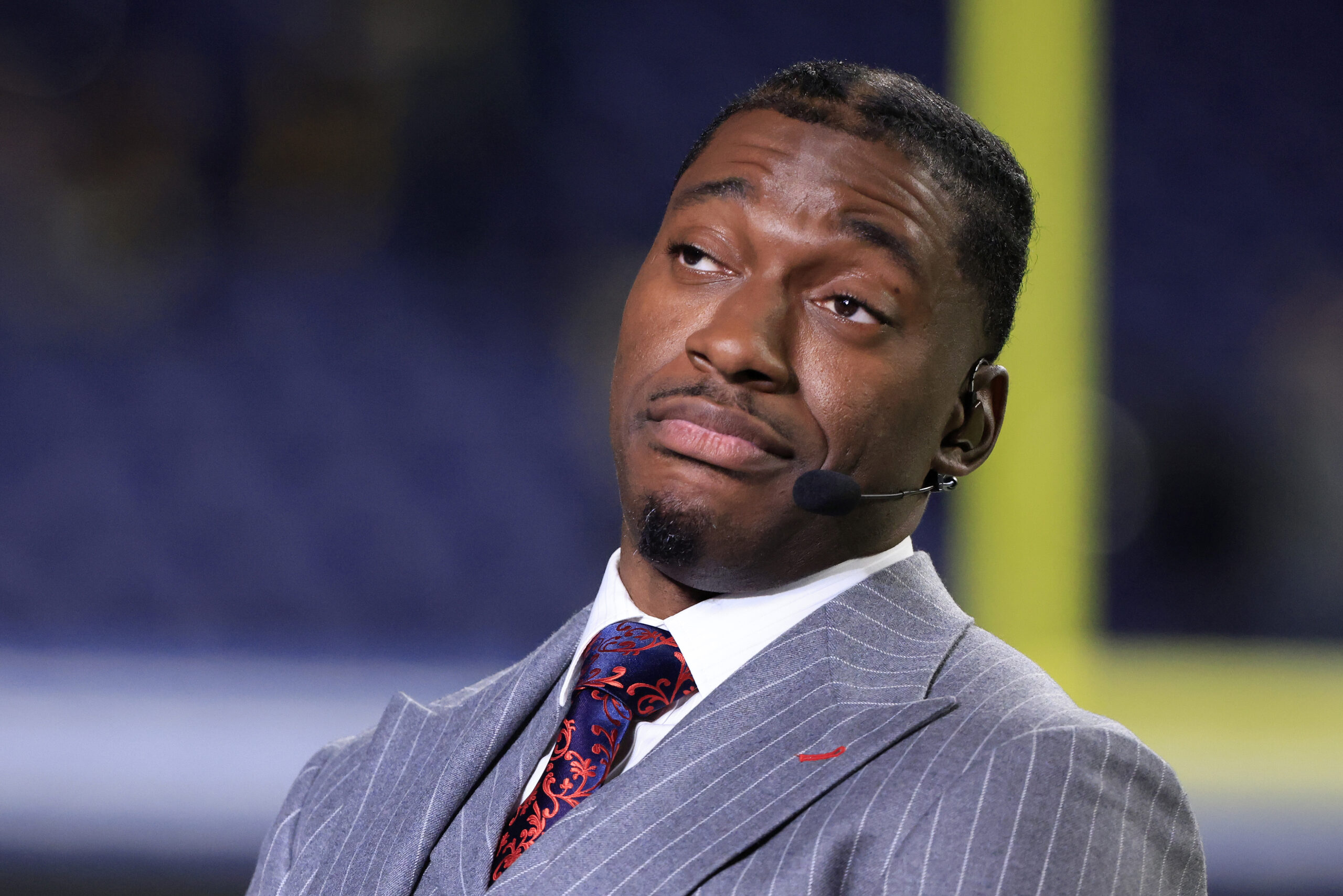While standing on a subway platform a couple of weeks ago, I noticed the poster for the second season of the HBO drama The Newsroom. Two things immediately stuck out, while glancing at the picture. One, the cast is standing in a field of some kind. It looks like a desert, with a strong enough wind that Jeff Daniels’ tie is blowing full power in the opposite direction. The rest of the cast is standing there, in different poses ranging from angry to disinterested. There is also a TV on the ground, with a blank screen. Series creator Aaron Sorkin is trying to convey something here, but it’s not easily definable. Maybe it’s the volatility of covering the news in the 21st Century…but that’s just me surmising out of thin air.
The other thing that stood out is how accurate the poster is in detailing modern media diversity. Of the eight people on it, six of them are white. The other two are played by Olivia Munn and Dev Patel. Munn is bi-racial (white and Chinese ancestry) and Patel is of Indian ancestry (for what it’s worth, they are the two most engaging characters, along with TV vet Sam Waterston, on what is a flawed series).
The poster looks exactly how it’s supposed to look; no Photoshop exaggeration is necessary. This is a reflection eternal of how most media organizations break down. Sure, there are black characters on the show, but they are relegated to ancillary roles. (Which is fine; I’m not here for any of that NAACP guilt stuff.) Can’t really blame Sorkin on this. He’s only relaying reality out here.
Progress is a peculiar animal. It’s not an exact science like gravity, or Kardashian ambition, so the metrics used in measuring it are very subjective.
Earlier this month, the American Society of News Editors released one of those reports that, when you read it, is guaranteed to illicit either a raised eyebrow or a mild expletive. The report stated that 90 percent of all newsroom editors are white. It’s not much better for magazines, networks or online properties, either.
In America, we’ve been a part of a number of progressive movements. From the Worker Rights Movement, accelerated by such events like NYC’s Triangle Shirtwaist Factory fire, to judicial measures such as Roe v. Wade.
Progress is hard work. It’s also unpredictable – you never really know when a breakthrough is about to take place. All we hear are the pre-game rumblings. The pushing force behind a lot of these changes is often media coverage – how certain events and people are construed plays a large part in the importance and urgency we accord different issues.
Whether or not you personally consider the media to have influence is largely irrelevant. All that matters is the remembrance that there are always people who rely on what others tell them, and, because of that, can be made to react on demand.
So when stories like the arrival of the British royal baby take over every mainstream news channel and website, understand that there’s an agenda at play.
When you see a masthead or an anchor desk, and are overcome with the dank smell of uniformity, the first thing you need to realize is that there was a meeting about this. None of what you see is a result of happenstance.
Every year there are media reports highlighting the lack of diversity in places like Silicon Valley and Wall St., while these same reporters actively ignore the self-assured person smirking in their hotel mirror . Truth is, progress in the media is just as bad, often held back by the same archaic constraints prevalent in other sectors of business.
Earlier this year, Richard Lapchick from the Institute for Diversity and Ethics In Sport, issued a statement stemming from his annual Racial and Gender Report Cards.
“If you look like me, you have a great chance for upward mobility in the sports departments of newspapers and dot-coms in the United States and Canada. If you are a woman or person of color, even in 2013, your chances are extremely limited.”
Lapchick’s report highlighted the lack of diversity at major and moderately sized media companies, a trend that has actually worsened over the last several years.
As a result, you have situations such as what occurred a few weeks ago at San Francisco’s KTVU, when an anchor mistakenly read racially insensitive, fake names of the pilots from crashed Asiana Airlines Flight 214.
From the Asian American Journalists Association:
KTVU touted itself as the leading source for accurate coverage of last Saturday’s Asiana crash. That boast took a major hit Friday when the station fell victim to a hoax that made a mockery of the tragedy and offended many loyal viewers. During its Friday noon newscast, the station reported that it had learned the names of the four pilots in the cockpit of the ill-fated flight, which crashed at San Francisco International Airport on July 6 and killed three passengers.
Those names were not only wrong, but so grossly offensive that it’s hard for us at the Asian American Journalists Association to fathom how those names made it on the broadcast. We choose not to repeat those names.
I’ll tell you how they made it to the broadcast. Likely, there wasn’t anyone in the room familiar enough with Asian culture to recognize that they were being hustled.
There is a notion that things can be better in terms of having diversified staffs, but it’s not something folks really think about unless they are forced. We’re only reminded during moments such as what happened in S.F. and the George Zimmerman verdict aftermath.
A lot of the national coverage was led by anchors who didn’t seem to grasp the moment. They initially framed it as just a black issue when, really, it’s also an issue about our faulty justice system. One of the main questions posed in the following days was "what do black parents tell their kids.” A question I found oversimplified. Why not ask, “What will white parents tell their kids?” Or at least “all parents.”
During production meetings, that idea probably never came up. In a room full of one-category colleagues, clichéd groupthink dominates. Just ask the White House press corps.
The Shadow League’s creation is a direct response to this often myopic view prevalent in the media. Being that we here at TSL respond to events from a black perspective, the majority of our staff is black. Even with that, one of our three editors, as well as several of our contributors, are white, because we understand the importance of divergent thinking.
NO NEW FRIENDS
In the past, bougie majors like Art History were exclusive to those who could afford not to work after graduation. The idea of working for free, or nearly for free, used to be a luxury. Now, it’s the standard for working in media.
According to the Association of Magazine Media and the Pew Research Center, ad pages dropped by an average of a whopping 32% percent from 2008 to 2012. Rates for the first half of 2013 are down almost five percent just from last year.
Ad pages dictates funding, so as revenue goes down, so do editorial budgets. So unless you are a trustafarian or don’t mind eating suspect meat products, your climb up the journalism ladder is going to be filled with landmines.
The truth is, every year journalism inches towards being an elitist profession. Powered by a hellified weeding out process that eliminates potential writers at the infancy stage of their careers.
Jemele Hill, one of ESPN’s most prominent columnists and a leading voice on race and gender issues, cites journalism’s problematic point of entry for its narrowing world view.
“A lot of these websites when they started out, they just hired their friends. If you’re starting something new, you want to be around people you know and trust and you probably can’t pay very well,” Hill says. “So often times they don’t recruit the same way. Some of them don’t even have internship programs. There is no pipeline. And unfortunately, a lot of these web sites and blogs that are able to hire interns, they again don’t pay or pay very little. And let’s be honest, if you’re a person of color and you’re coming from an economically challenged background, you can’t afford to work for free. So it winds up becoming not only a race issue, but a class issue.”
Point is, it’s just harder to be a journalist now and that, too, impacts diversity. As the pool of candidates thins, we end up with a less interesting collection of people. They are less flexible, more sheltered, and overall, fail to properly engage their readership. Worse, when there is a “diversity hire,” it’s often just a cosmetic touch-up, where that person is relegated to covering a specific beat focused on their particular demographic.
For University of Maryland professor and frequent ESPN contributor Kevin Blackistone, a lack of diversity isn’t just a industry buzz-word, but a fundamental flaw in the democratic process.
“Websites are a lot like the newspaper business. They believe that if they have one black voice, that’s enough. They’re pretty reluctant to hire voices of color. The one exception was where I worked, AOL Fanhouse, which approached diversity in a fairly novel way,” Blackistone explained.
“They just went out and hired people, and it turned out to be an extremely diverse staff. The people who run new media don’t necessarily have any allegiance to the idea that diversity is a responsible and necessary function of journalism. I don’t know that any of the websites have any association with NABJ or Hispanic journalist organization or women’s journalist organization. I go back to what A.J. Daulerio of Deadspin said a few years ago to Jemele Hill when she asked him why his staffed appeared to be so white. He said, ‘because it’s a white industry.’ I think that’s the pervasive view of a lot of people who run these websites.”
The people who run these organizations, for any number of reasons, often shun large-scale movements toward staff variety. It isn’t always racial – having more black writers and anchors, doesn’t mean we still won’t suffer at the whims of fools. This recent interview by FOX News anchor Lauren Green proves as much.
Diversity also means expanded room at the table for those of a different gender, sexuality, religion and socio-economic background. If someone has the ability to perform the job responsibilities, that’s all that should matter.
When word came out that former CNN commentator Roland Martin will be hosting a daily TV morning show on TV One, I had to do a slow clap. Right now, there are a small number of national voices through which black viewpoints take precedence. Wherein the thoughts of Black America are valued and wielded with legit strength and consideration. We’ll opine on sports, or anything that Beyoncé does, or when there are racial strife issues. However, it’s rare to see a black man or woman on TV discussing the controversies plaguing the Keystone pipeline, or fracking, for example.
What annoys so many people is that with such low numbers, dissimilar viewpoints are never heard. Except at MSNBC, which has jumped into the diversity pool with arms wide open. They employ a litany of wide-ranging personalities; most impressively, Melissa Harris-Perry, whose eponymously named show is hands down the four most multifarious hours on TV.
While MSNBC has been a leader here, we would be amiss to ignore other media properties that are at least trying to close the gap.
“Raycom Media has also done an excellent job. They’re a regional network in the south,” says Greg Lee, president of the National Association of Black Journalists. “ESPN has done a excellent job with their diversity reporters and on-air talent, and ABC News is trying to make inroads with hiring Byron Pitts and Rob Nelson, so they’re taking strides.”
It’s not quite doomsday, but considering it’s 2013, it really seems as though we are underachieving as a nation.
One of the benefits of working in the media is seeing it for all its good and bad. We’re closer to the goal line than we’ve ever been, but scoring is hardly guaranteed. For every two steps we take forward as a nation in one category, we take four steps back in another.
The dearth of non-mainstream writers isn’t just a problem for the news, either. In Part 2 of our series, we’ll give you a glimpse of how the sausage is made in entertainment media.
*Additional reporting for this piece is credited to Andre Carter and Brandon Lilly.



